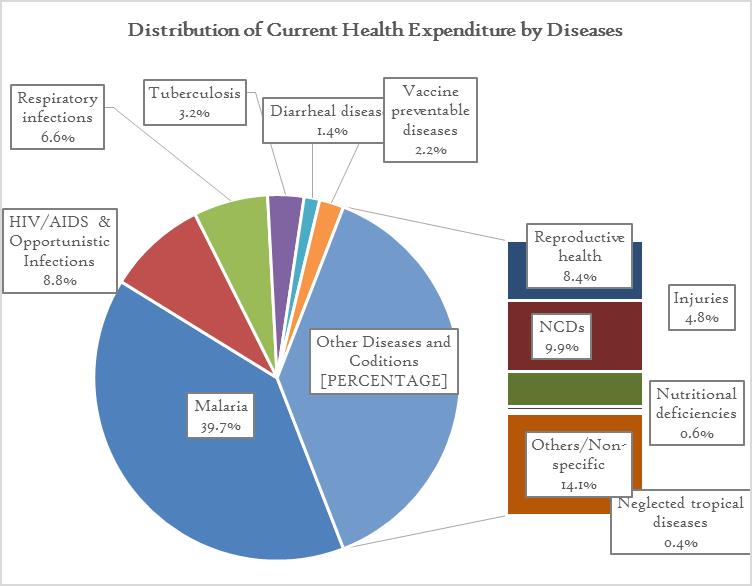Over the past two decades, macro-economic forces, mismanagement, political instability and corruption have led to inadequate financial resource flows to the Nigerian health sector. Inefficient use of available resources, lack of financial management at all levels, the rise in poverty levels and an increase in the burden of disease such as AIDS/HIV/TB have also aggravated the problems. In order to accelerate the process and progress of health sector reform, with ultimate aim of ensuring significant improvement in the health status of the Nigerian population, it will be extremely important to understand the broad financial dimensions of the health sector. There would be a need to generate and use relevant evidences, which are currently lacking. For example, the data available cannot adequately provide answers to the following basic questions: What is the total spending in the health sector? Who is spending? What is being spent on? What are the sources of this expenditure? In this regard, the health accounts would be an appropriate and consistent framework for modeling reforms and monitoring the impact of health care financing. Furthermore, it would be a vital instrument for describing and measuring the flow of health expenditures outlining total spending, the contribution to spending by different sources and claims on spending by different uses of fund.
Sokoto and Bauchi State require better planning to improve the efficiency, management, and distribution of health services, particularly for the poor and vulnerable populations such as women and children. But they lack the crucial information to coherently analyze the level of social protection and measure the extent to which people are protected against illnesses and have access to health services in state. On routine and regular basis, they need to collect and analyze data on actual allocations and expenditure of resources and link them to health performance and system reforms.
Both states have indicated as priorities in their Strategic health development plans, the development of State health accounts SHA to measure the “financial pulse” of the health sector so that they can answer the questions: who is financing health, how much do they spend, how are the funds distributed, what is the financial burden on private households in the form of out-of-pocket expenditure, what kind of services are being purchased, and who benefits from these services. By linking healthcare financing expenditures[1] with allocations, the SHA will provide information to state policy-makers to enable them discern system-wide inequities and identify areas that require changes in policy leading to improve access, utilization and better health outcomes.
[1] From central, state and local governments, international and indigenous donors, private contributors and households

